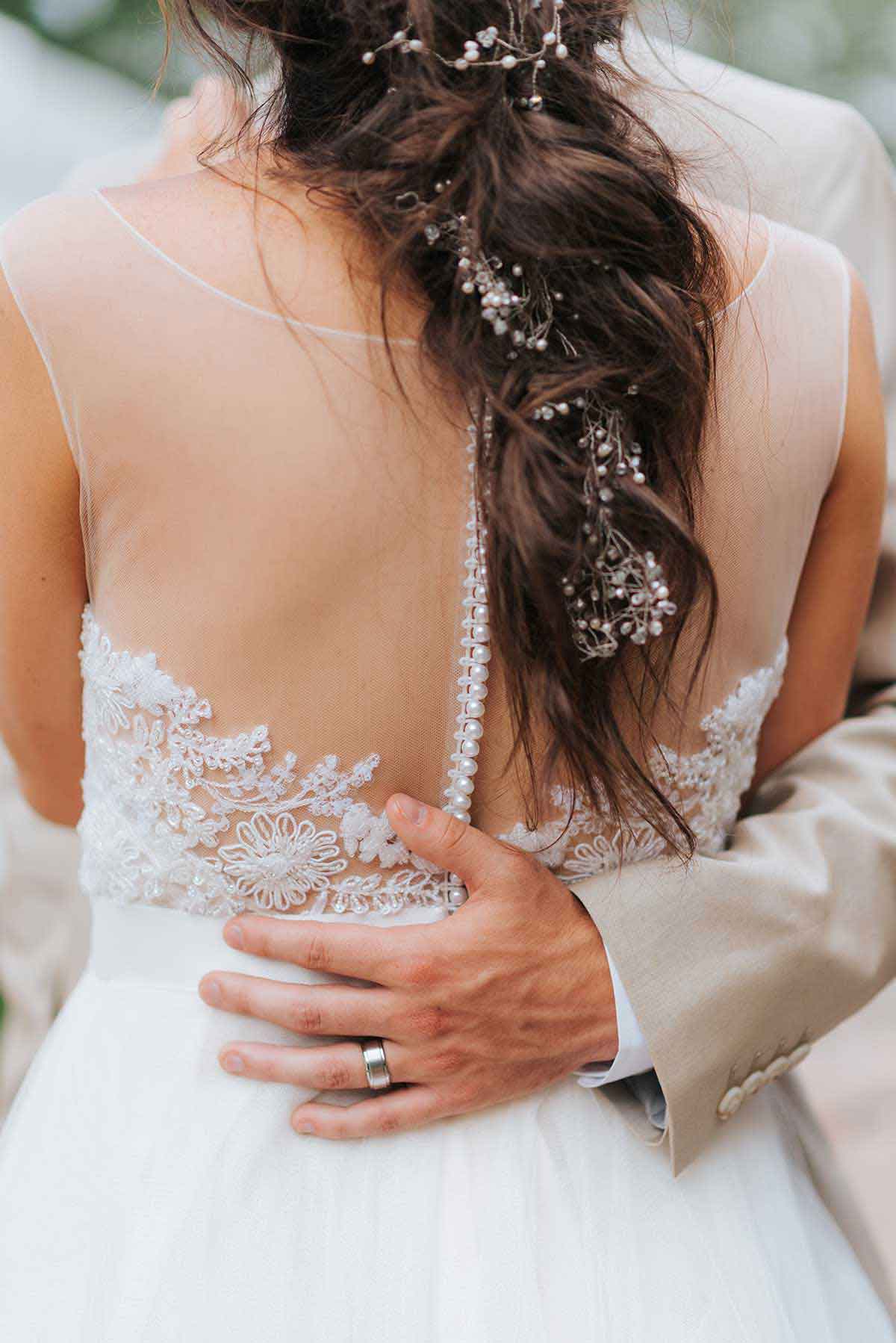Every bride dreams of looking like a vision on their wedding day as they walk down the aisle in the perfect wedding gown that fits perfectly and flatters their curves. However, basking in dress bliss may necessitate a trip to the seamstress for women’s wedding dress alteration. Every bride is unique, and the type of dress they choose for their wedding day reflects this. Brides must bring their wedding undergarments and shoes to each fitting in order to get the perfect fit. The right strapless bra or Spanx can completely transform your appearance. Carrying these accessories allows the bride to get a good idea of how she will look and feel on her wedding day. While the tailor adjusts the hem, you must wear your wedding shoes. If you haven’t decided on a wedding shoe yet, consider wearing the same while adjusting the length of your hem.
How to showcase your women’s wedding dress alteration?
The wedding is the ultimate stage for showcasing that stunning gown you spent months searching for, and a wardrobe malfunction is the last thing any bride wants on this day. Herein lies the significance of altering each dress to ensure the perfect fit. Most bridal boutiques employ an in-house seamstress. Alternatively, they may recommend a reputable tailor for the job. Today, we’ll walk you through a women’s wedding dress alteration guide to ensure a seamless fit.
Some basic points of women’s wedding dress alteration:
Wedding gowns are typically sold in generic sizes and rarely fit the bride’s body. Take, for example, a gown that fits perfectly around the hips but is too big around the bust. Once you’ve decided on a style, the bridal salon will compare the designer’s size chart to your measurements in order to order the closest gown size. Brides should mentally prepare to alter their gown once it is perfectly fitted to their figure a women’s wedding dress alteration.
Different Types of Wedding Dress Alterations
-
Dress Fittings On Schedule 3:
Bridal salons and seamstresses recommend at least three wedding dress fittings. The first is scheduled about three months before your wedding date, the second about a month before, and the final about two weeks before. A second fitting may be required for extensive customizations such as a train or long sleeves.
-
Inquire About In-House Sewing Machines:
In-house wedding alterations save time and produce better results because seamstresses are more likely to have worked on similar styles before. Shops frequently offer a small discount for alterations.
-
Hemline Trimming:
Wedding gown hemlines are typically extra long in order to accommodate taller brides, so petite ladies must seek alteration. The cost of hemline shortening is determined by the gown layers and whether any lace needs to be removed before adding back to the final hem length. Brides who want to go for a more traditional look can opt for a hem that grazes the floor.
-
Changing The Train Loop:
Train loops are small ribbon loops attached to the train of a dress to be lifted up while moving around. These are available in two lengths: the long, which is held in your hand while dancing, and the short, which buttons up under your derrière. The latter is more popular because it allows you to choose between different styles such as under bustle or French bustle, over bustle, waterfall bustle, Austrian bustle, and so on.
-
Tucking In The Waist And Hips:
Dress-side seam adjustments are quite common. While shopping for your wedding gown, you should discuss with the salesperson how much alteration is possible for the dress size. Because you don’t have to worry about the old seam showing, taking the dress in is a lot easier. Making sure your wedding gown fits properly around the bust, waist, and heaps can help you achieve that perfect silhouette as you walk down the aisle.
-
Strap Reduction:
Wedding gowns typically have longer straps to accommodate the needs of various brides. Changing the shoulder straps is simple and inexpensive.
-
Taking In Close To The Bust Line:
When it comes to chest size, store-bought dresses are quite generous, and the shape frequently needs to be altered so that you do not have to suffer embarrassment while stooping down. While this modification may be more difficult than others, it is doable if you discuss it thoroughly with your seamstress.
-
Back Modifications Including A Waist Stay:
You can easily alter the back of your wedding gown regardless of its style. Brides who want an open back can have some material removed. Ladies who want to be modest can add a lace back to their strapless gown. When requesting alterations, always provide your seamstress with inspirational photos.
What is jeans alteration and what do you mean by jeans alteration?

First, make sure that hemming the jeans won’t cut off any important details or ruin the leg cut. Because these jeans are bootcut, cutting fabric off the bottom will make the bootcut smaller all around. Sometimes experts find that getting regular-sized jeans hemmed works better for me than petite jeans alteration.
